By Carolina Vicario, Class of 2016
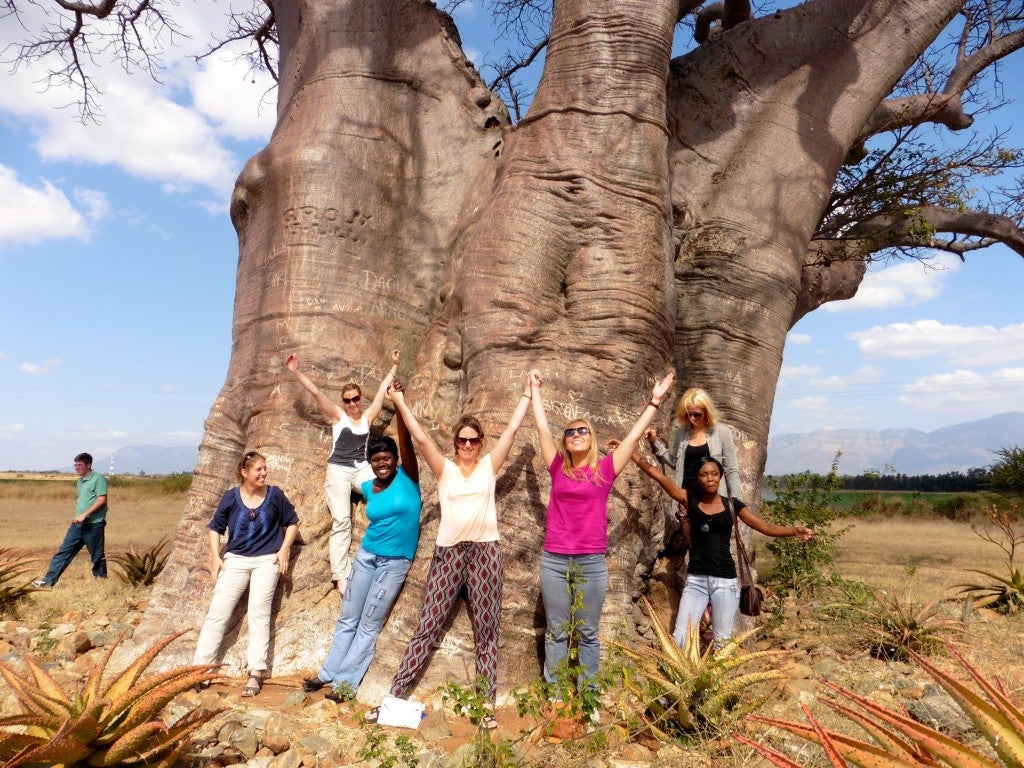 Of all the nooks and niches on this planet, where would be your number one destination? A year ago, mine was South Africa. The stories I heard from my friends who studied abroad in South Africa made it the top country on my wish list and the many visits to the San Diego Zoo and Safari Park throughout my childhood built up an immense awe and adoration for “safari animals.”
Of all the nooks and niches on this planet, where would be your number one destination? A year ago, mine was South Africa. The stories I heard from my friends who studied abroad in South Africa made it the top country on my wish list and the many visits to the San Diego Zoo and Safari Park throughout my childhood built up an immense awe and adoration for “safari animals.”
My experiences through the Students for One Health Club at UC Davis also sparked my passion for interdisciplinary problem solving to complex health problems. During the summer of 2014, I got to experience these passions in unique combination through a One Health Summer School, and research project living in Kruger National Park.
One Health Summer School through the University of Pretoria (South Africa’s veterinary school)
Two UC Davis veterinary students, a UC Davis faculty member and I joined a group of veterinary and PhD students from around the world. The Netherlands, Lesotho, Zimbabwe, and England were among the countries represented. This two-week traveling course placed us in the context (physically, intellectually, and emotionally) of various dilemmas. A theme throughout the course was certainly exposure, but more so what would you do about this? What should or shouldn’t you do about this? And how?
I will walk you through some of the most challenging conflicts that were presented to us—the ones that impacted me the most.
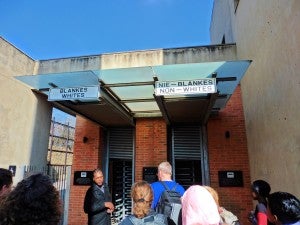 1) How do you re-integrate groups of people after being racially segregated into two groups for decades? How do you acknowledge and present a tragic history while simultaneously creating peace and rebuilding a country? What are the impacts on health, economics, and education?“To be free is not merely to cast off one’s chains, but to live in a way that respects and enhances the freedom of others.” –Nelson Mandela. The Apartheid Museum, Johannesburg.
1) How do you re-integrate groups of people after being racially segregated into two groups for decades? How do you acknowledge and present a tragic history while simultaneously creating peace and rebuilding a country? What are the impacts on health, economics, and education?“To be free is not merely to cast off one’s chains, but to live in a way that respects and enhances the freedom of others.” –Nelson Mandela. The Apartheid Museum, Johannesburg.
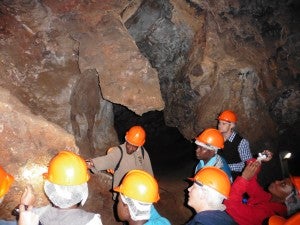 2) Who were the earliest humans, what were they like, and how are we shaped because of them? I’ve never felt so young as when I was standing in these historic caves.
2) Who were the earliest humans, what were they like, and how are we shaped because of them? I’ve never felt so young as when I was standing in these historic caves.
“The Earth has been spinning in space for about 4.6-billion years, in a universe that is about 14-billion years old. The earliest forms of life appeared about 3.8-billion years ago, long, long before the first modern humans emerged in Africa, only about 200,000 years ago.” –Sterkfontein caves, “The Cradle of Mankind,” Gauteng province.
3) How does an outsider succeed in understanding the problems and the needs of a community? How should solutions be brought about? How should data be collected and used?
“Scientists are famous for having poor communication. You invade, collect data and leave. They only take and don’t give back to communities.” These were powerful words to open a day-long workshop on listening. Located just outside the north west borders of Kruger National Park, like many communities in this area, Bennde Mutale was formed by families that were displaced from their native grounds inside Kruger when the park’s boundaries were drawn. The village has faced immense challenges including catastrophic floods, periods of drought without water, promises of their land back without follow-through, unemployment, and lack of access to health care. The nearest clinic is 15 kilometers away.
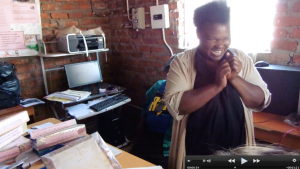 My task for the day was to listen. To interview Deli, the director of the home-based care workers, hear her story, and reenact her story to our school at the end of the day.
My task for the day was to listen. To interview Deli, the director of the home-based care workers, hear her story, and reenact her story to our school at the end of the day.
My goal when we arrived in Bennde Mutale was not to use my camera. But the truth is I didn’t have a choice. I sat down in the shade by myself, and within minutes about 10 children flocked to me, sat next to, behind, and almost on top of me. 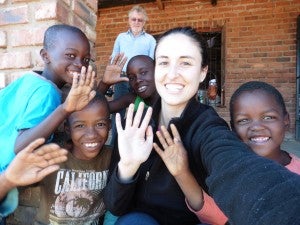 They weren’t looking at me, just sat there and watched their classmates play soccer. They speak English, the bravest asked me my name, and the ice was broken from then on. They asked me to use my camera to take lots of pictures with them, then show them the pictures on the screen. I handed them my camera and let them click it themselves, and that was just so exciting.
They weren’t looking at me, just sat there and watched their classmates play soccer. They speak English, the bravest asked me my name, and the ice was broken from then on. They asked me to use my camera to take lots of pictures with them, then show them the pictures on the screen. I handed them my camera and let them click it themselves, and that was just so exciting.
4) What role do mines play in the local and global economy? What are the human, environmental, and wildlife issues that have to be managed simultaneously in mine? Can local wildlife save the lives of employees?
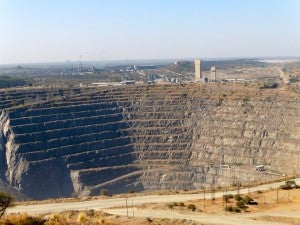 We traveled to Phalaborwa, a mining town that now is becoming a bit more of a tourist attraction. This mine is unique in that it has wildlife living within the grounds. They have an ecologist that advises on all environmental aspects. We met with the project’s ecologist and had a Q&A session that shed light on the waste created by mines, the environmental damage that results, and the realistic demand for all mined materials.
We traveled to Phalaborwa, a mining town that now is becoming a bit more of a tourist attraction. This mine is unique in that it has wildlife living within the grounds. They have an ecologist that advises on all environmental aspects. We met with the project’s ecologist and had a Q&A session that shed light on the waste created by mines, the environmental damage that results, and the realistic demand for all mined materials.
The workers love having wildlife on the premises, especially the buffalo and the elephants. Any wild animal that dies is tested for levels of copper, and other metals, and in this way serve as sentinels for other animals as well as employees in the mine. This works because if metal contamination at the mine surpasses the set threshold known to be “safe,” herbivores would be the first to have toxicity.
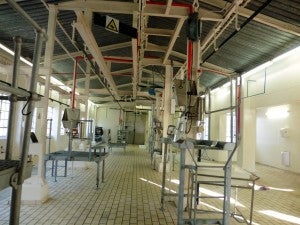 5) Who should decide what wild animals are allowed to be culled for human consumption? What should be done with an unused, fully equipped abattoir?
5) Who should decide what wild animals are allowed to be culled for human consumption? What should be done with an unused, fully equipped abattoir?
This is now the “Wildlife Research Abattoir” of Kruger National Park, essentially an empty slaughterhouse. It used to be a by-products plant, where they would slaughter elephants, buffalo, impala, and other antelope. It was explained that influence from animal rights groups from the U.S.A. resulted in Kruger National Park’s discontinuation of culling wild elephants for population control and as a source of food and materials.
6) What are the drivers behind poaching? How can various countries, organizations and departments work together to urgently protect rhinos? Protect the safety of all National Parks? Find alternative solutions to poverty alleviation?
“POACHING: Due to economic disparities within the countries, organized crime has exploited the opportunities to harness poverty in communities much more effectively than formal government structures—this is a significant threat to the future of the Trans-Fronteir Conservation Area.” –Skukuza Camp, Veterinary Headquartes of Kruger National Park.
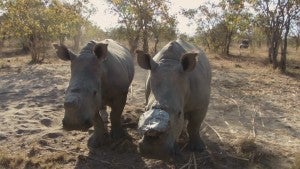 Can zoo vets heal rhinos surviving poaching incidents? Will the rhinos have long term survival? Should Kruger flood the market with confiscated rhino horns and devalue rhino horn so that it’s no longer worth the risk for poachers to hunt for more horn? Should rhinos be farmed for their horns to be sold in a legal and controlled way? Should all rhinos have their horns preventatively amputated?
Can zoo vets heal rhinos surviving poaching incidents? Will the rhinos have long term survival? Should Kruger flood the market with confiscated rhino horns and devalue rhino horn so that it’s no longer worth the risk for poachers to hunt for more horn? Should rhinos be farmed for their horns to be sold in a legal and controlled way? Should all rhinos have their horns preventatively amputated?
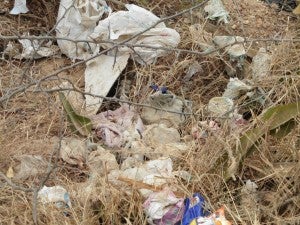 7) What are the environmental, economic, and social impacts of using modern, disposable products? How should common waste including diapers, bottles, tires be disposed of? What is the reality of how they are discarded? How can this be improved?
7) What are the environmental, economic, and social impacts of using modern, disposable products? How should common waste including diapers, bottles, tires be disposed of? What is the reality of how they are discarded? How can this be improved?
8) How can livestock, people, and wildlife coexist in the healthiest and most sustainable ways? How can livestock populations be monitored and protected from Foot and Mouth Disease in endemic areas? In areas that come in contact with wild hoofstock?
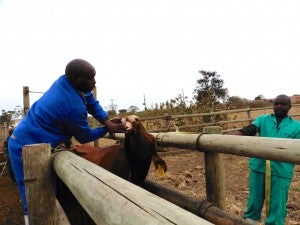 The Hluvukani Animal Health Clinic is run by local Environmental Monitors, the University of Pretoria’s vet school, and local governmental veterinarians. Together they run dip tanks, used to walk cattle through anti-tick dip, mostly during summer months. All livestock owners are required to present their herd at the community dip tank every week. There, the state veterinarian has technicians who randomly inspect every 5th or so animal looking for signs of Foot & Mouth Disease or other reportable lesions. They also vaccinate the herds when needed. The University of Pretoria introduced a surveillance system, so all cattle also receive an ID ear tag & ear tattoo. The alternative would be the herders doing these procedures on their own, without the state vet or U.P.’s quality control.
The Hluvukani Animal Health Clinic is run by local Environmental Monitors, the University of Pretoria’s vet school, and local governmental veterinarians. Together they run dip tanks, used to walk cattle through anti-tick dip, mostly during summer months. All livestock owners are required to present their herd at the community dip tank every week. There, the state veterinarian has technicians who randomly inspect every 5th or so animal looking for signs of Foot & Mouth Disease or other reportable lesions. They also vaccinate the herds when needed. The University of Pretoria introduced a surveillance system, so all cattle also receive an ID ear tag & ear tattoo. The alternative would be the herders doing these procedures on their own, without the state vet or U.P.’s quality control.
I wish I had answers to these questions. Our group of students, doctors, and researchers discussed and brainstormed for hours about the advantages and disadvantages of various options. But maybe more realistic than having a concrete answer is maintaining a holistic approach, with the voices of those most directly affected at the forefront of change.
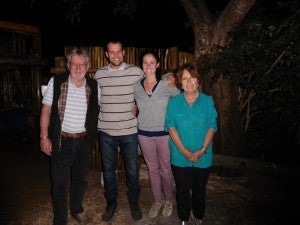 I am exceedingly grateful for the organizers of this course, who have also become some of my One Health idols: Dr. Mike Kock (animal health), Dr. Jacques VanRooyen (environmental health), and Dr. Lucille Blumberg (human health).
I am exceedingly grateful for the organizers of this course, who have also become some of my One Health idols: Dr. Mike Kock (animal health), Dr. Jacques VanRooyen (environmental health), and Dr. Lucille Blumberg (human health).
